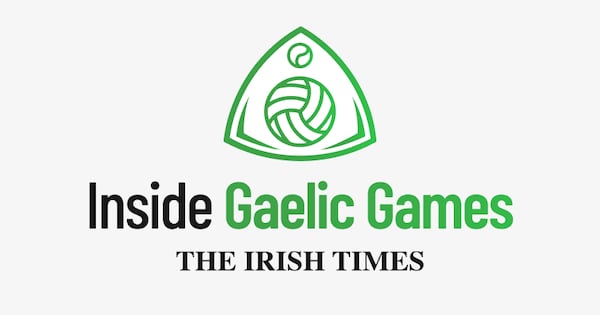This is the time of the year when intercounty panels turn into an episode of Traitors, with everybody wondering who has been murdered during the night. Under GAA rules collective sessions are not permitted until later this month, but that is one of those instructions written on rice paper and eaten, like the special agents used to do in old espionage movies.
Preseason training programmes have been issued all over the country by now, some of them weeks ago. You can be sure that bootleg training sessions have taken place too, especially in places where last season ended early or with a sickening thud.
Amid all that, the first draft of next season’s panels have been drawn up. Training panels at this time of the year are rarely announced to the public, but the comings and goings are the subject of hot gossip everywhere.
In exceptional cases, such as the retirement of Declan Hannon in Limerick, Patrick Horgan in Cork or Darren Hughes in Monaghan and a handful of others there will be a statement and a round of hearty tributes. But those players were decorated veterans who had given 15 years, 18 years and 19 years of service. With A-list retirements there is an accepted protocol now.
But not every exit from an intercounty panel is the same. Not every player retires voluntarily. Not every player is ready to go. Every player who thinks they’re ready to go is open to second thoughts and regret. Every leave-taking is a wrench, regardless.
In the GPA’s annual membership there is typically 20 to 30 per cent of churn. Many of those retirements, or quiet exclusions from next season’s panel, never make headlines. Many of them contain an element of unintentional brutality, like a relationship break-up.
Once upon a time, and not that long ago, intercounty careers were ended by guillotine. Niall Cahalane remembers reading about his end in the newspaper. The first Cork football panel of the new national league season was published in the Cork Examiner and, after 15 seasons, his name was missing. That was it: no phone call, no letter of gratitude from the county board, or anybody else. No warning. He had served his purpose and outlasted his usefulness.
That was in 1997, not back in the Dark Ages. That experience wasn’t unique to Cahalane. All over the country it was common practice for players to be released without an explanation or an expression of thanks. One minute, they were all-in; next minute, they were dispensed with.
At this time of the year there is an inclination to read between the lines too. Distinguished long-serving players are often given the option to retire gracefully rather than suffer the indignity of being dropped. It is impossible to say, for example, if Hannon had been given a tap on the shoulder, but it was clear this season that he was no longer Limerick’s first-choice centre back and that situation wasn’t going to change. His intercounty career had come to a natural end.

In an interview with the Smaller Fish podcast, after he announced his retirement, Horgan seemed to indicate that if Pat Ryan had continued as Cork manager he might have carried on too. What he didn’t say was whether Ben O’Connor, the new Cork manager, had wanted him to continue.
O’Connor was swept into power by the Cork county board on a change manifesto and if Horgan had not retired when he did, he would have been dicing with an unceremonious ending.
Others have not been spared such an outcome. Conor Lehane missed the Cork county final with an Achilles injury and a couple of days later received a phone call to say his intercounty career was over. Lehane came on as a sub in the All-Ireland final and semi-final and made a significant impact off the bench in the Munster final, just a few months ago.
Once again he was one of the outstanding forwards in the local championship, but he turned 33 in July, 14 years after he made his debut for Cork. There was no indication he was about to quit, but in a squad that is being put through a spin cycle, Lehane’s age profile made him vulnerable.
At 28 years of age, Seamus Flanagan would have expected a few more seasons on the Limerick panel, but last week he was let go after a fractured year and piecemeal gametime. In an interview with the GAA Social podcast in July he felt he had “maybe lost touch with the management” during the season, and maybe that suspicion was borne out in their decision to cut him.
For Lehane and Flanagan and a couple of hundred of others around the country in recent weeks, there has been no soft landing. At a Mayo county board meeting last week one delegate complained that players had been dropped by the new Mayo management while they were still involved in the club championship, a distraction they didn’t need. The Mayo chair, Seamus Tuohy, acknowledged that “welfare” must be taken into account.
In recent years the GPA has tried to mediate that emotional toll. They have offered weekend gatherings and one-on-one interventions with players who were leaving long intercounty careers behind them and peering into the hole it had left in their lives.
As soon as any player leaves an intercounty panel, by whatever means, contact is made about the services available. Last month, a dozen of them gathered in Athlone for a series of workshops as part of the GPA’s Beyond The Field programme. This might have been the only thing they had in common.
The culling will resume in the new year. Before the league starts, at least 10 players who have been added to training panels in recent weeks will be cut. By then they will have spilled their guts in the heaviest training block of the year and in the worst of the weather. The intercounty game is heartless. All over the country there are players who feel chewed up and spat out.
Once you cross the threshold the commitment demanded is total and unequivocal with no guarantee of anything in return. Investing yourself in an intercounty set-up is the biggest gamble that any GAA player can take.
When the call comes, though, players never think of it like that.

















